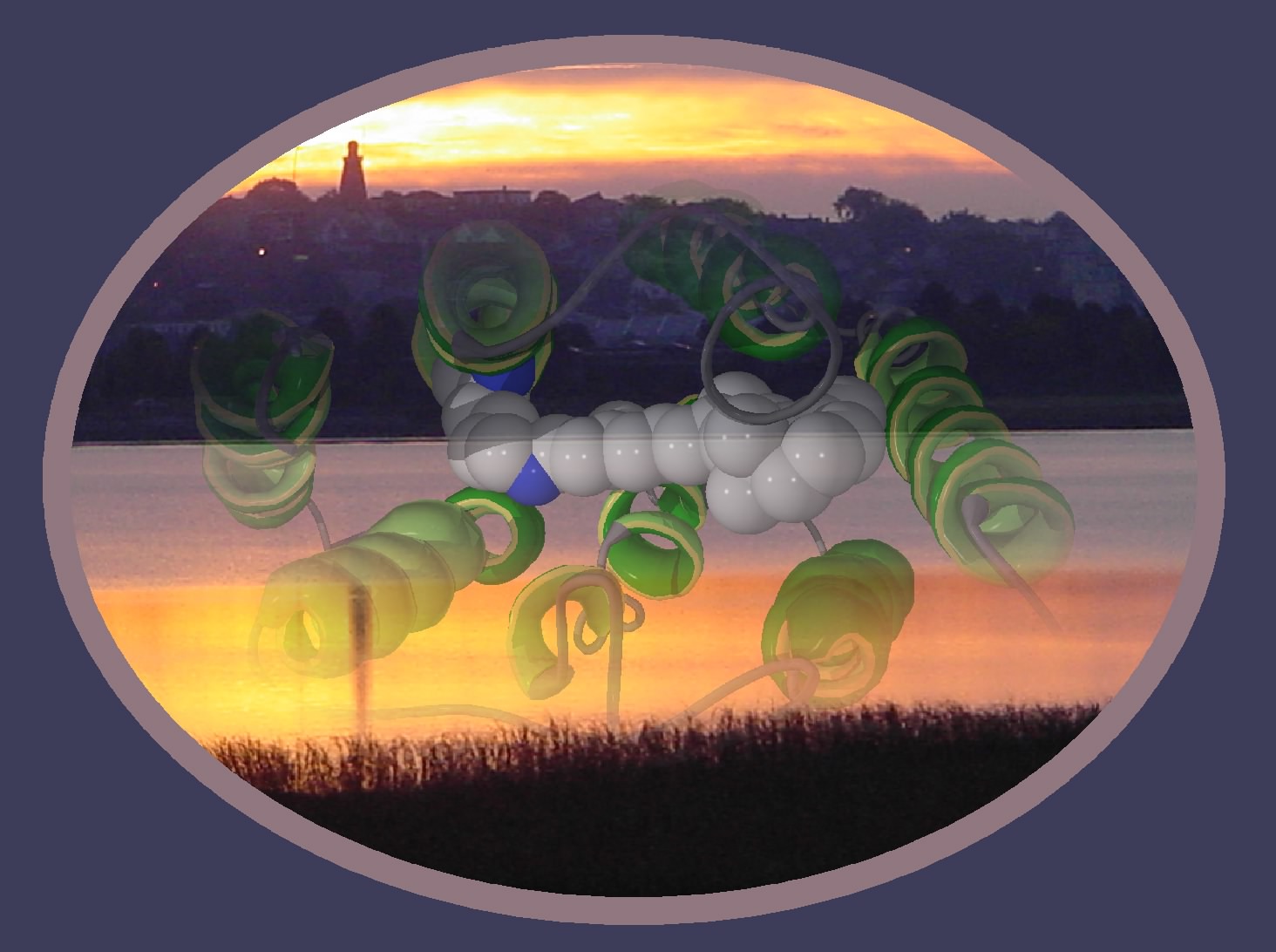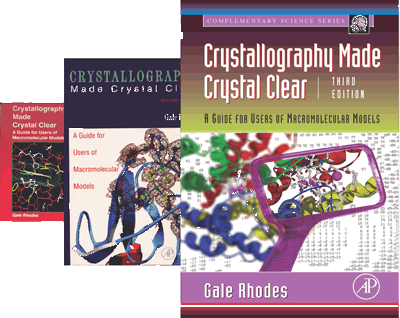Gale Rhodes
Contact Information
AUTHOR'S BOOK SALE
Crystallography Made Crystal Clear, signed by author, at Amazon.com, from this merchant: 15 Beacon Ink
•
3rd Edition, new and used, sold out.
• 2nd Edition NEW
• 1st Edition NEW
Supplies are limited.
Quick Links
For brief descriptions of resources, browse this page.
DeepView Tutorial
Bioinformatics Tutorial
Stereo Viewing Tutorial
Judging Model Quality:
A Glossary
Pet Peeve Style Manual
Student-Led Discussion Manual
Little Library for the Reading-Time Challenged
Home Page for Crystallography Made Crystal Clear
Resources for Biochemistry Teachers
Molecular Graphics
Teach yourself how to see and analyze macromolecular
structure.
Tutorial for DeepView
(Swiss-PdbViewer)
UPDATED for v. 4.0.
From first steps to advanced use of a free, friendly, and powerful molecular graphics program.
Bioinformatics
Bioinformatics for Beginners
UPDATED 2008/10. How to use sequence and structure databases. Designed for newcomers, including first-year biochemistry
students. INCLUDES HOMOLOGY MODELS --
using sequence and homologous structures to model proteins of unknown
structure.
Judging the Quality of Macromolecular Models
Glossary
of Terms to help you understand
journal articles, and to make wise use of structures determined by
X-ray crystallography, NMR, and homology modeling.
Stereo Viewing
See Models in 3D
See what everyone else misses about structure by viewing in 3D.
New Life for Seminars and Journal Clubs
User's Manual for Student-Led Discussion
Improve
and increase student participation—more informed talk from students, more
thoughtful listening for you.
Improve Your Writing
The Pet Peeve Style Manual
Eliminate annoying and confusing words and phrases from your scientific writing. Your readers will thank you.
Refreshment for Your Mind
Little Library for the Reading-Time Challenged
You can't
think about structural biology all the time. Make the most of outside
reading and broaden your education with these small but pithy books.
All worth reading and rereading.
You are visitor number

since 2008/10/15

since 2005/01/01
This site featured in Netwatch, Science,
and Internet
Scout Project
TEACHERS may use these tools freely in their courses.
See Agreement for Use.
Is Something Missing?
I moved and cleaned up this site in October 2008.
If you cannot find a resource that you need,
please
let me know. |
Welcome to
The Molecular Level
Tools for Structural Biology
Education and Training

Simplicity: Photons and Protons
Composite image, Back Cove (Portland, Maine) and model of bacteriorhodopsin
During daylight hours, proteins like this one are hard at work for certain
types of photosynthetic bacteria in the Cove's surface waters. Bacteriorhodopsins
of archaebacteria and their recently discovered marine bacterial relatives,
proteorhodopsins, transform light energy into chemical energy, using
absorbed light (photons) to pump hydrogen ions (protons) across cell
membranes. The resulting disparity between the quantities of protons
inside and outside the bacterial membrane, called a concentration gradient,
is a fundamental and versatile source of chemical energy that bacteria
use for maintenence, propulsion, and reproduction. Bacteria are important
links in food chains that support the abundant and varied life of Back
Cove.
By using photons to pump protons, photosynthetic rhodopsins forge a
link between two of the universe's simplest entities.
Image ©2001 Gale Rhodes
(prepared with DeepView and Canvas)
Foundations
of
Structural Biology
I was captured for life
by chemistry and by crystals.
Dorothy Hodgkin
Crystallography
Made Crystal Clear:
A Guide for Users of Macromolecular Models
by Gale Rhodes
Third Edition, 2006
Elsevier/Academic Press

CMCC-III covers the basics of single-crystal X-ray crystallography for users of macromolecular models and beginning
crystallographers. Includes
brief introductions to NMR and homology models, and to other diffraction
methods (electron, neutron, Laue, fiber, and powder).
Learn where all types of models come from and how to use them wisely.
Learn more about CMCC-III .
Visit the CMCC Home Page.
Links to all tools mentioned in the book, plus sites that
expand your understanding of macromolecular
models. |
Biochemistry Resources
Without biochemistry, you miss most of the beauty in structural biology. Learn or
review key concepts with these tools. Student-tested and compatible with standard texts.
Biochemistry Topics List
Integrated with all of the following Biochemistry
Resources.
Biochemistry, Chapter Zero: Setting the Stage for
Biochemistry
Get acquainted with metabolism while reviewing essential concepts from general and organic chemistry.
Learning Strategies
Get a foothold on new subjects.
Essential Skills
Ready to move to the next topic?
Learning Biochemistry with DeepView
Problems and tutorials that require molecular graphics, and DeepView does them best.
Goodies
A grab-bag of learning aids for beginning biochemistry.
O-CHem
Directory
Review your organic chemistry. Prepared by Professor
Thomas Newton.
Molecular
Graphics Manifesto
Molecular graphics should be an integral part of a first biochemistry course. Here's why.
Biochemistry Resources
Links to all of the above and more.
|
Disclaimer: Statements at this site represent the views of Gale Rhodes, and not of any other organizations associated with these pages. Links to other pages do not constitute endorsement of products or services. The author receives no compensation for links on this site. Take precautions with any online seller to protect your personal and financial information. If it's cold out, wear a warm coat.
|

